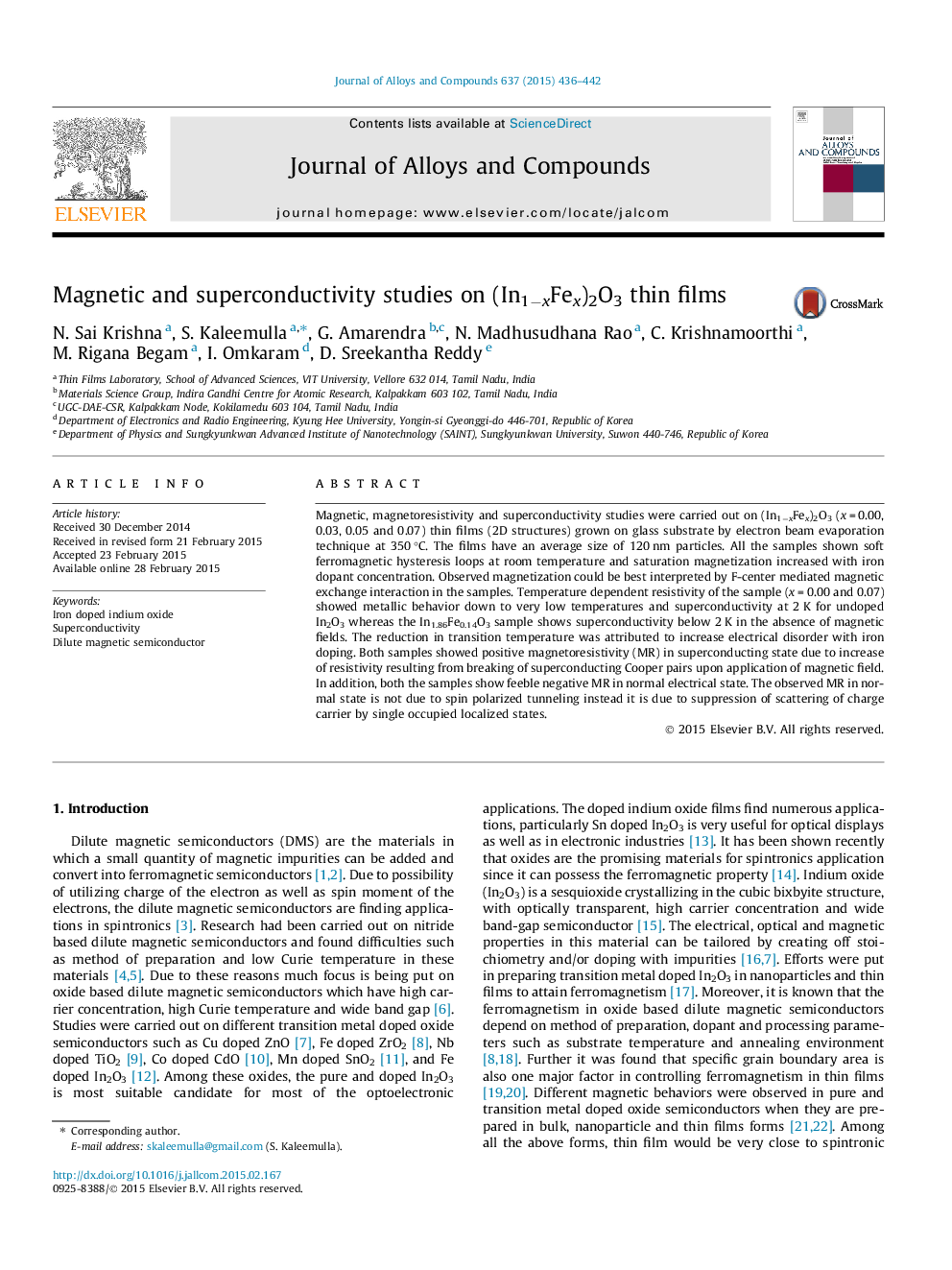| Article ID | Journal | Published Year | Pages | File Type |
|---|---|---|---|---|
| 1609519 | Journal of Alloys and Compounds | 2015 | 7 Pages |
•Fe doped In2O3 thin films deposited using electron beam evaporation technique.•Characterization of the samples using XRD, SEM, EDAX, AES, Raman spectroscopy, FT-IR, VSM and magnetoresistance.•All Fe doped In2O3 thin films exhibited the cubic structure of In2O3.•Pure and Fe doped In2O3 samples exhibited room temperature ferromagnetism and superconductivity at 2 K.
Magnetic, magnetoresistivity and superconductivity studies were carried out on (In1−xFex)2O3 (x = 0.00, 0.03, 0.05 and 0.07) thin films (2D structures) grown on glass substrate by electron beam evaporation technique at 350 °C. The films have an average size of 120 nm particles. All the samples shown soft ferromagnetic hysteresis loops at room temperature and saturation magnetization increased with iron dopant concentration. Observed magnetization could be best interpreted by F-center mediated magnetic exchange interaction in the samples. Temperature dependent resistivity of the sample (x = 0.00 and 0.07) showed metallic behavior down to very low temperatures and superconductivity at 2 K for undoped In2O3 whereas the In1.86Fe0.14O3 sample shows superconductivity below 2 K in the absence of magnetic fields. The reduction in transition temperature was attributed to increase electrical disorder with iron doping. Both samples showed positive magnetoresistivity (MR) in superconducting state due to increase of resistivity resulting from breaking of superconducting Cooper pairs upon application of magnetic field. In addition, both the samples show feeble negative MR in normal electrical state. The observed MR in normal state is not due to spin polarized tunneling instead it is due to suppression of scattering of charge carrier by single occupied localized states.
